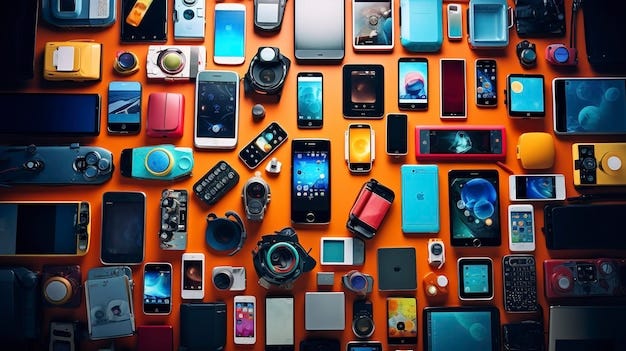In the fast-paced world of technology, mobile phones have emerged as indispensable tools that revolutionize how we live, work, and communicate. From their humble beginnings as bulky devices for making calls, mobiles have transformed into powerful pocket-sized computers that connect us to the world.
The Journey of Mobile Phones
The story of mobile phones began in the 1970s with the invention of the first mobile device by Motorola. The Motorola DynaTAC, released in 1983, was a massive leap in communication technology, allowing people to make calls without being tethered to a landline. However, these early models were expensive, heavy, and primarily used by business professionals.
In the 1990s, mobile phones became more accessible as advancements in technology led to smaller, more affordable devices. Brands like Nokia and Ericsson dominated this era, introducing iconic models such as the Nokia 3310, known for its durability and long battery life.
The true revolution began in 2007 with the launch of Apple’s iPhone, which combined telephony with computing. This marked the birth of smartphones, which offered features like internet browsing, cameras, and apps, transforming mobile phones into versatile tools for entertainment, productivity, and social interaction.
Key Features of Modern Smartphones
Today’s smartphones are a testament to technological innovation. Here are some of the standout features that define modern mobile devices:
1. High-Quality Cameras
Smartphones have replaced traditional cameras for many users, offering advanced photography tools like portrait modes, night photography, and even 8K video recording.
2. Powerful Processors
With processors rivaling those in laptops, smartphones can handle gaming, video editing, and multitasking effortlessly.
3. Advanced Connectivity
From 4G to the rapid adoption of 5G technology, mobile phones now provide lightning-fast internet speeds, enabling seamless streaming and online gaming.
4. Apps for Everything
The app ecosystem has exploded, offering tools for productivity, fitness tracking, social media, and more. There’s an app for virtually every need.
5. Biometric Security
Features like fingerprint sensors and facial recognition ensure that smartphones are not only convenient but also secure.
6. Long Battery Life and Fast Charging
Modern devices are equipped with larger batteries and fast-charging capabilities, ensuring that users can stay connected throughout the day.
Popular Mobile Phone Brands
The smartphone market is dominated by several key players:
• Apple: Known for its premium design and user-friendly iOS ecosystem.
• Samsung: A leader in Android devices, offering a wide range of models from budget to flagship.
• Xiaomi: Popular for its affordable yet feature-rich smartphones.
• Google: Renowned for its Pixel phones with exceptional cameras and stock Android experience.
• OnePlus: Focused on performance and value for money.
Choosing the Right Mobile Phone
When buying a mobile phone, consider these factors:
1. Budget: Decide on a price range and look for the best features within that bracket.
2. Operating System: Choose between iOS and Android based on your preferences.
3. Camera: If photography is important, compare camera specs and software capabilities.
4. Battery Life: Look for devices with good battery reviews and fast-charging options.
5. Storage: Ensure the phone has enough internal storage or supports expandable memory.
Future of Mobile Phones
The future of mobile phones looks promising, with trends pointing toward foldable devices, improved AI integration, and even wearable smartphones. Companies are also focusing on sustainability, creating eco-friendly devices and improving recycling programs.
Mobile phones have come a long way from being simple communication tools to becoming an integral part of our lives. Whether for work, entertainment, or staying connected with loved ones, these devices continue to evolve, shaping the way we interact with the world.




